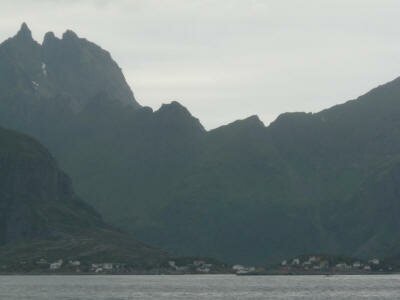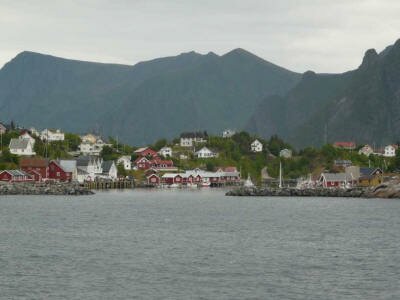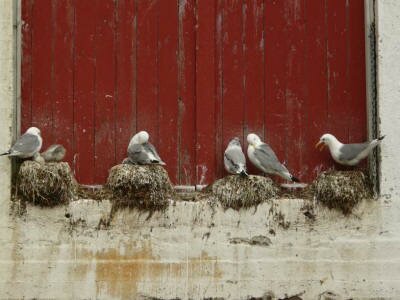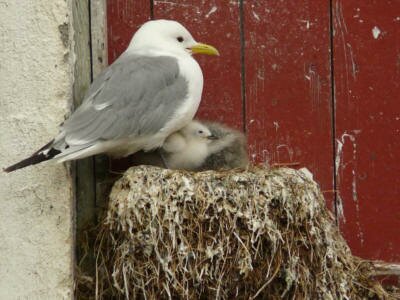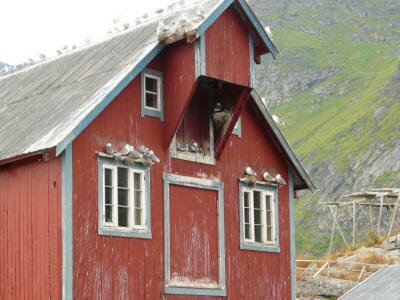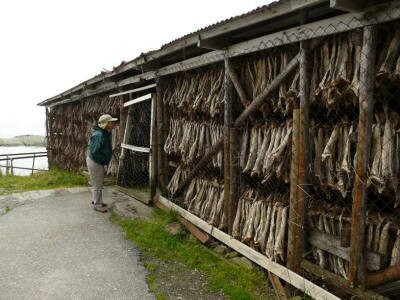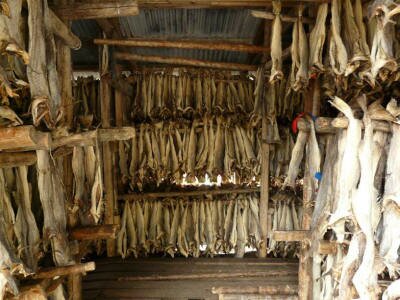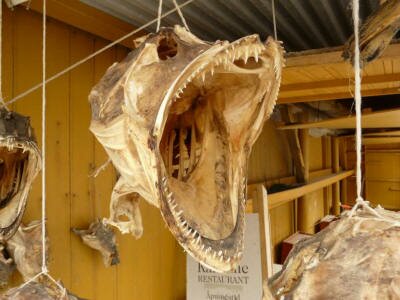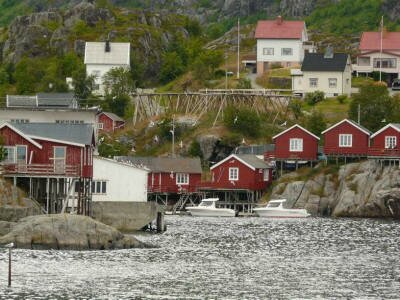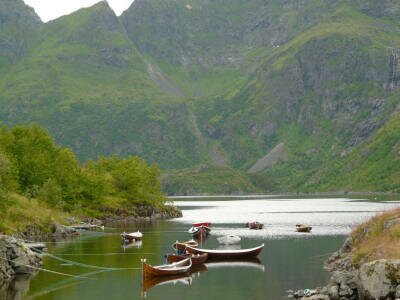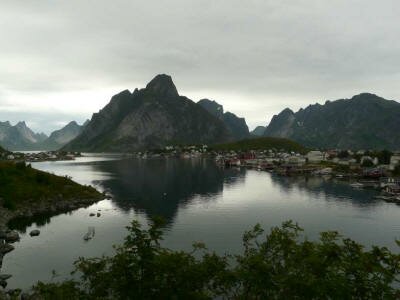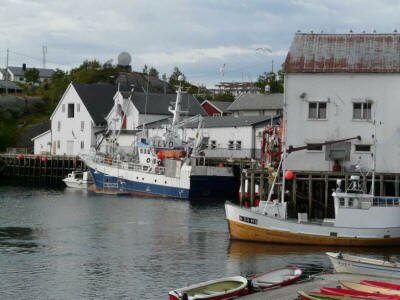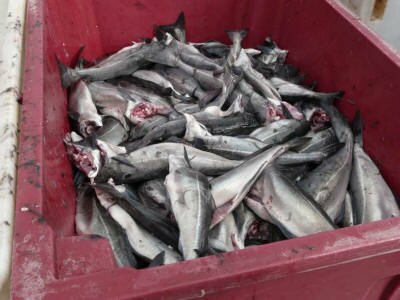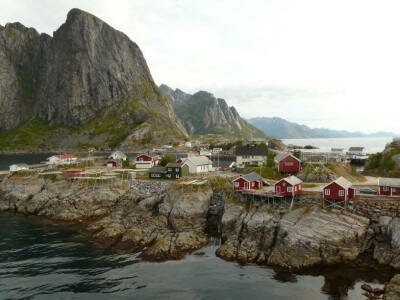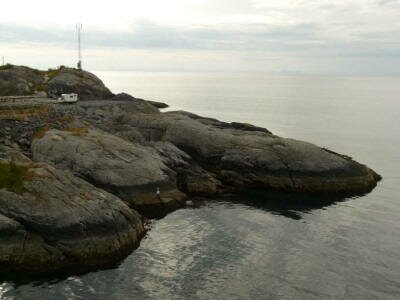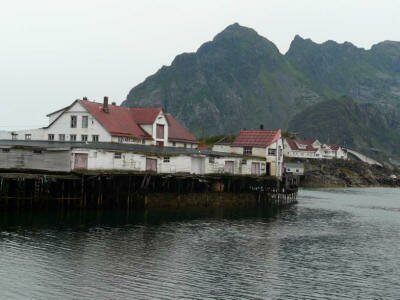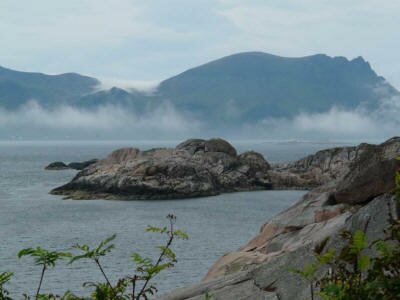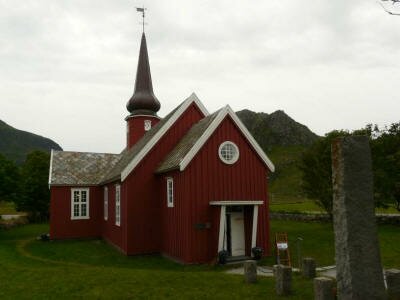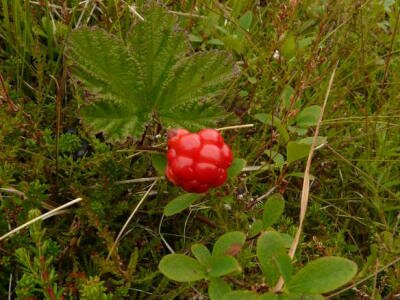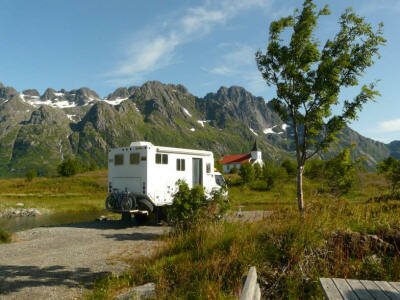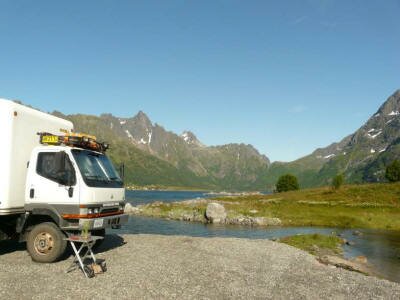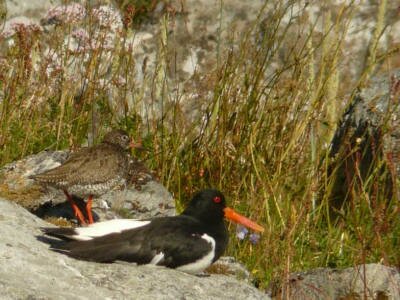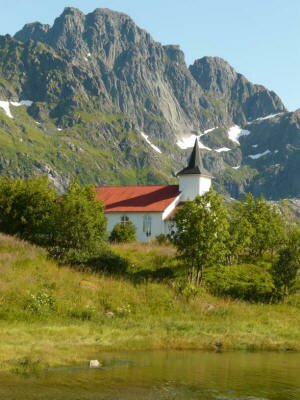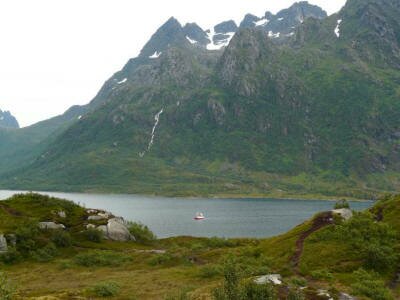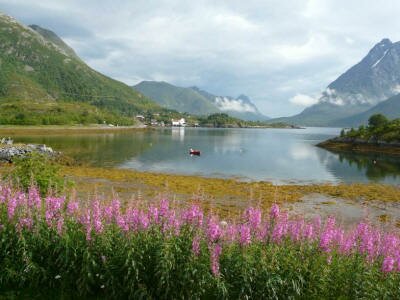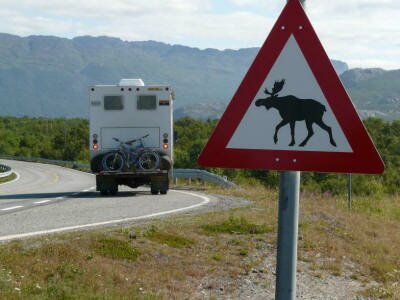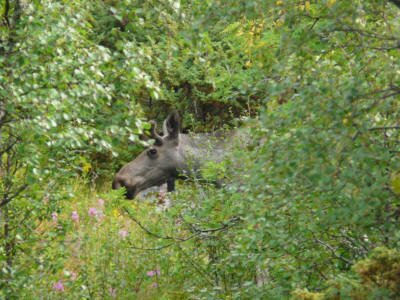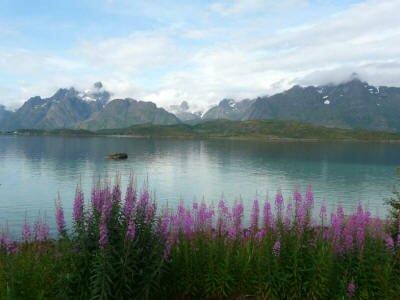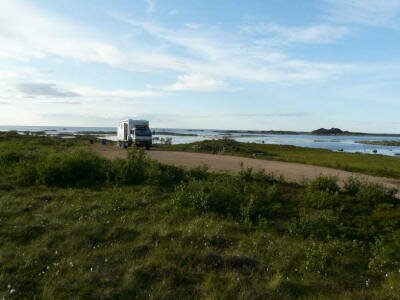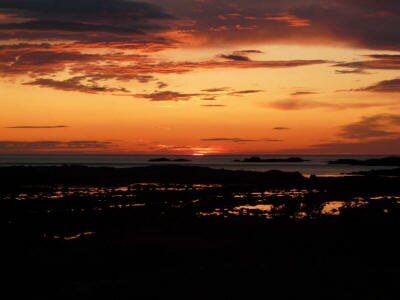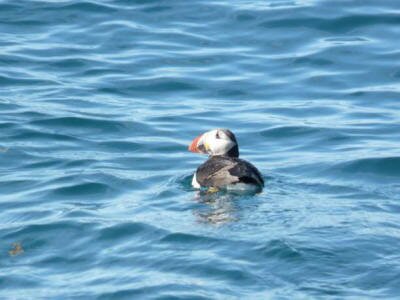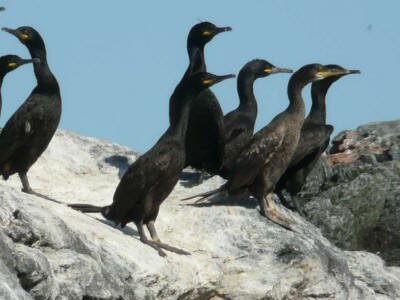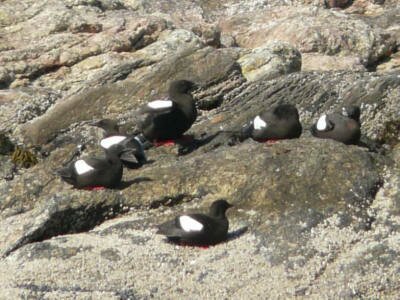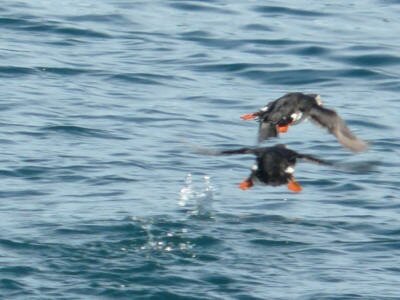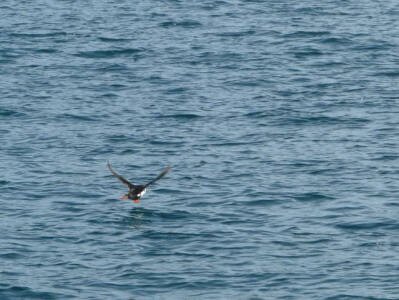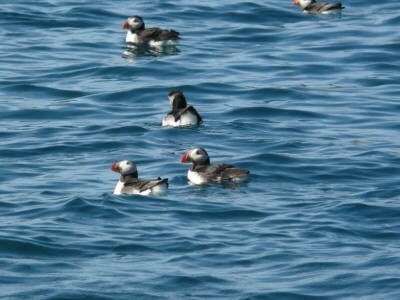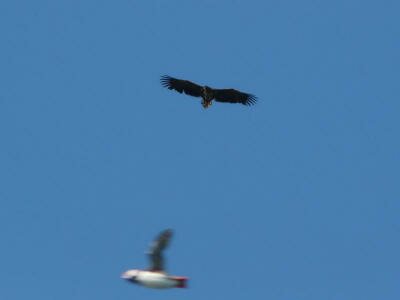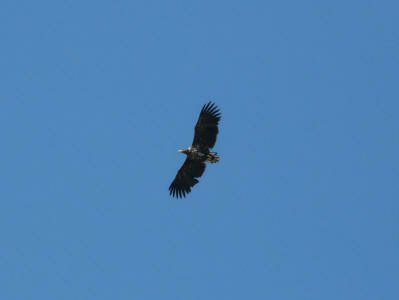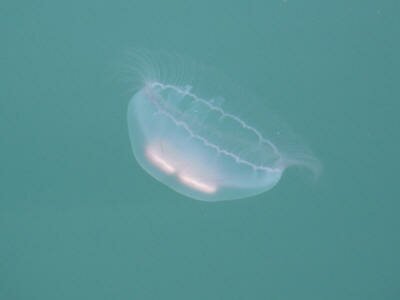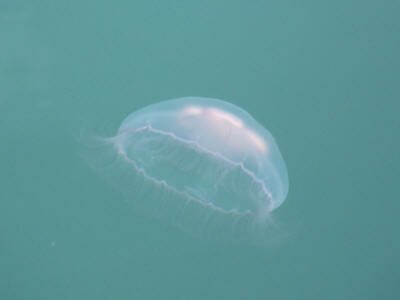July 23 - 28, 2009
The Lofoten and Vesteralen Islands
Getting up early to get in line for the ferry (not too difficult when you have 23 hours of daylight) we found ourselves the third vehicle to arrive. This was much better than yesterday and the fifty-odd vehicles that were already waiting.
The ride across the fjord took about 3 and a half hours and although it rained on and off, the passage was uneventful - not rough as our guidebook suggested it might be. We arrived in the Lofotens in the tiny village of Moskenes, just five kilometers (3 miles) from the southern end of the road through the islands.
After we arrived, we did actually go to the end of the road, not to say that we did it, but because our destination was the village of Å. In the village, so many of the 19th century buildings have survived that the village is basically one big outdoor museum. We also took tons of photos of the Kittiwakes (a gull) that were nesting in the village. They had built their nests on just about any ledge or overhang in the village. Every building was covered in nests and the rocks in the water were likewise covered. This was very interesting and noisy, and luckily we didn't get bombed by any of the birds.
We wandered around buildings that were identified as a boathouse, forge, cod-liver oil processing plant, houses, bakery and rorbuers. Basically, rorbuers are old fishermen's shacks, but this is a simplified answer. To understand why the fishermen even needed these shelters is to know why they were here in the Lofotens to begin with. This answer is fish. Every year, from February to April, cod arrive in the waters off of the islands to spawn. The cod come in such unbelievably high numbers that, back in the 1930's, over 30,000 fishermen were working here catching cod. Today, the fishermen catch so many fish that at every fishing village hundreds of thousands of cod can be seen hanging from and drying on rank after rank of wooden racks. When we arrived, the catch was already completed and most of the fish had been packed up and processed for delivery to places around the world. We did see several buildings that were still full of hundreds of drying cod. The smell was intense, and we can only imagine that in the winter, the smell must be overwhelming. Of course the fishermen here say, that to them, the smell is the smell of money!
|
|
|
But back to the rorbuers. The first of these buildings (no longer standing though) were ordered to be built by the King to provide shelter (ie: dormitories) for the fishermen who until that time had been sleeping under their upturned boats. This wasn't just a nice gesture on the King's part, after all, the sale of the fish would directly benefit his wealth so it made good financial sense to provide housing for the men so that they could catch more fish which would make the King even wealthier.
After wandering around the buildings of Å, we started our drive towards the north tip of the islands. Driving the 300km (186 miles) would take us nearly a week. Along the way we just continuously marveled over the beauty of the Islands. The Lofotens are towering, jagged granite mountains cut by glacial valleys and the turquoise blue water of countless fjords. Most of the villages are fishing villages, at least originally, so they are built along the shoreline - and each village competes with its neighbor for the title of most beautiful. The scenery is just stunning!
Most evenings we made camp along the shoreline enjoying the wonderful views out to sea. One night we stayed in a campground that was in yet another fabulous location on a fjord across from several waterfalls. It was so peaceful that we stayed for a second night. We even had a tiny estuary where we were able to get close-up photos of several shorebirds. That day one of our neighbors, who happened to be from the islands, presented us with a gift of 4 fish for our dinner. This was from his catch of a dozen fish which he caught in something like one hour!
| One day we drove along a narrow fjord, named the Trolls' Fjord (Trolls are a big part of the Norwegian folk history). When we stopped for a break, we spotted our first moose crossing the road nearby. Grabbing the camera and jumping out of the truck, we were lucky to get a photo of one of the four moose. We were beginning to think that the only moose in Norway were the moose on the Beware of Moose signs on the highway. The day got even better as we spotted another new bird, a goosander (a type of duck) and two dolphins! |
Once we crossed over to the Vesteralen Islands, we made camp on the western shoreline on Andoy Island. The day was one of our few clear days so we decided to stay up to see just how late the sun set. Although we were just a few days too late to see the "midnight sun", we were surprised to find that the sun didn't actually set until about 12:15am. We fell asleep at that point so we didn't see the sun rise which probably took place about 30 minutes later. This far north, about 68.3° North, the sun follows a saucer-like trajectory across the sky. It doesn't just rise in the east and set in the west, the sun kind of circles the sky just dipping beneath the horizon for a few minutes before rising again a little bit further to the right (the north actually).
On our last day on the Islands we booked space on a fishing trawler for a special bird safari to the rocks offshore. Over the course of about an hour and a half, we saw some of the nearly 25,000 puffins, razorbills, guillemots, kittiwakes, cormorants, white tailed eagles and even an arctic skua. (Eat your heart out Les.) It was amazing, the sky and the water were full of birds. The puffins were great, with their huge rainbow colored, parrot-like bill and their orange feet.
After the safari while we were having lunch on the pier we spotted a bunch of jellyfish in the water. They looked so interesting that we had to take a bunch of photos. Then we headed to the northern tip of the island at Andenes where we caught a ride on a old wallowing ferry for the two hour trip back across the fjord toward the mainland. What an excellent week.
|
Home Scandinavia Home Journal |
